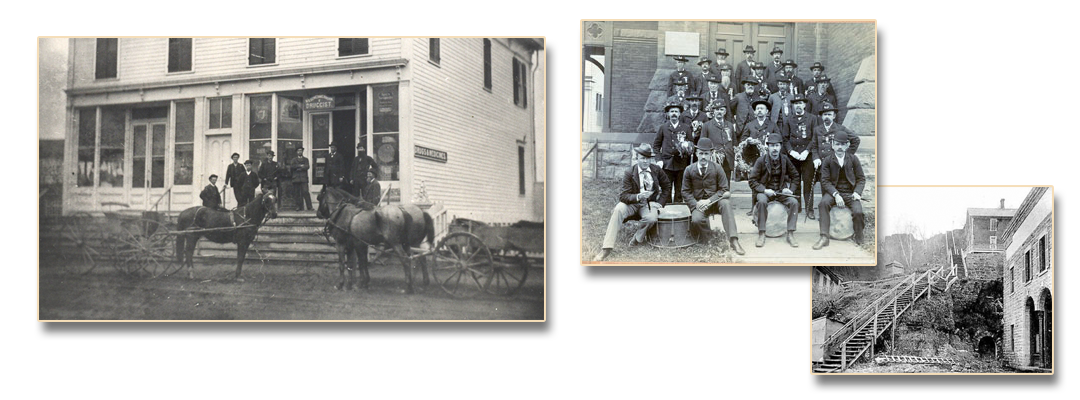Here is a historical look at Stillwater, from the publication Enjoy Saratoga County: A Self Guiding Glimpse of History, published by Saratoga County.

WELCOME TO STILLWATER. Stillwater was on the highway of history before the history was recorded. Her main street, Hudson Avenue, on the road from Albany to Canada, has known the feet of Indians who crossed here to the Hoosick River; expeditionary forces in 1690, 1691, 1709 and during the French and Indian Wars; brave Fr. [Isaac] Jogues on his way to martyrdom; the migration of settlers coming “west” from New England; the midwinter trek of Colonel Henry Knox and his men as they brought cannons from Ticonderoga to Cambridge, Massachusetts; the gathering of militia and American forces led under the command of General Horatio Gates in the surprising defeat of the British in 1777 on Stillwater’s hills (The Battles of Saratoga); the dejected march of General Burgoyne’s defeated army; the bustling commerce of a market center and growing manufacturing community during the golden age of the Champlain Canal; visits from great men (Washington really did sleep here in 1783 at the Harmanus Schuyler home); and the gradual changeover to a residential community.
A blockhouse and stockade called Fort Ingoldsby were built here in 1709 by Peter Schuyler to protect the river landing. It was later replaced in 1756 by Fort Winslow, and its storehouses again used during the Revolution. In 1732 the Conelius Vandenburg house was built across the river and a ferry based there, which eventually carried British troops toward their prison camp at Cambridge, Massachusetts. This house still stands with its date, 1732, in iron figures plainly visible. Ferry Lane still leads to the river and is marked by a historic marker, as are many other sites in town. George Palmer, an early patriot, at his own expense equipped a company of militia which marched to Crown Point and Ticonderoga, arriving just after Ethan Allen had taken the fort. Palmer Street is named for him and several other streets in the village honor Revolutionary heroes and outstanding personalities. The town furnished the field for the Battles of Bemis Heights – or Saratoga and half of the 13th Albany Militia Regiment that helped defeat the British on October 7, 1777, now officially one of the 15 most decisive battles of the world. This area is now the Saratoga National Historical Park. General Philip Schuyler used as headquarters, prior to this battle, the Dirck Swart house, still standing south of Ferry Lane. Dick Swart was to become the first County Clerk of the newly formed Saratoga County in 1791 and the first meeting of the county Board of Supervisors was held in Stillwater. The Town itself was formed in 1791, and the Village was incorporated in 1816.
Abigail Powers Fillmore, daughter of Rev. Lemuel Powers, who was a dynamic minister to the early First Baptist Church, was born here. She was to become the 13th First Lady, as the wife of Millard Fillmore.a memorial stone to Rev. Powers is at the site of the old church on Route 423, near the early cemetery. Many Revolutionary soldiers rest in cemeteries throughout the Town. At the site of the “Yellow Meeting House” Congregational Church, which moved as a church from Canaan, Connecticut to Stillwater in 1762, the old cemetery tells the history of a frontier town. There are many beautiful old homes, privately owned; historic churches, a library that was the Episcopal chapel, short stretches of the old Champlain canal, a new park where the relocated historic blockhouse rests, replica of the original Fort Ingoldsby built in 1709, offers a vista view for visitors and local information for travelers. We hope you will enjoy adding your footsteps to the “highway of history”.For a more detailed history of Stillwater prior to the 20th century go to History of Saratoga County, New York by Nathaniel Bartlett Sylvester, 1878.
